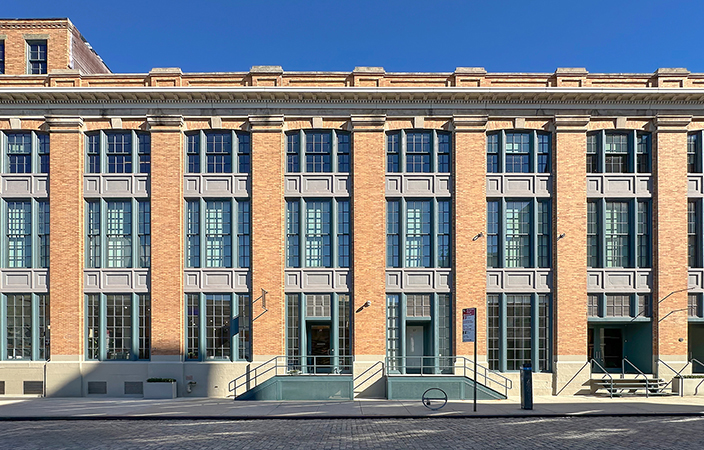News:
Brokerage
Posted: December 29, 2008
Stormwater management at the crux of development: An essential component
Stormwater management is a hot topic these days, and rightfully so. It's showing up in construction industry journals, it's the topic of conferences, and local communities and developers are paying attention to its importance.
One of the reasons for this attention is the rash of flooding we've seen in recent years. Decades of robust growth and economic development have resulted in communities with drainage systems that are expected to carry more stormwater than they were originally designed to accommodate. Further complicating matters is the federal requirement for communities to comply with the National Pollutant Discharge Elimination System (NPDES) Municipal Separate Storm Sewer (MS4) stormwater quality mandates. This unfunded, federally mandated program adds another level of service that a municipality must provide and creates a higher public demand for drainage and flood control all without any clear source of funding.
Regulated MS4s must develop, implement, and enforce stormwater management programs that reduce pollutants to the "maximum extent practicable," protect water quality, and satisfy the appropriate water quality requirements of the Clean Water Act. They must also address such measures as public outreach and participation, illicit discharge detection, construction runoff control, and pollution prevention, which, in turn, affects the progress and permitting of any development occurring in the town.
Because funding stormwater programs is often an issue for municipalities, many have addressed it by implementing development fees or a user fee system commonly called a stormwater utility. As with any funding mechanism, but critically important for a utility, this fee is calculated by defining the level of service the community expects and then defining the costs to provide it. Who will clean the catch basins? How often? Who will mow grassed channels? How many times a year? How many linear feet of paved channel will be repaired each year? All these questions must be determined and the costs of service identified so that developers understand the expectations and justification for the fees.
A good engineering consultant can help both communities and developers in all aspects of stormwater utilities, from developing financing strategies and designing stormwater management plans to establishing a credits program that helps non-residential customers reduce their stormwater fees. For example, consulting firm Stantec in Rochester recently helped the Jewish Home of Rochester expand its parking lot. The site is located along a busy thoroughfare and within the Irondequoit Creek Watershed, which meant strict conformance with town, regional, state, and federal permit requirements. The firm has worked on dozens of similar projects for office parks, restaurants, residential complexes, and other developments in upstate New York.
This sort of planning is also essential for brownfield redevelopment which, by nature, involves a great deal of pollution remediation and stormwater management. For nearly a decade, Stantec worked closely with the city of Rochester and state and local agencies to redevelop the former APCO site (Newcroft Drive) on the city's east side, including extensive stormwater assessment, design, and mitigation planning. After years of remediation and clean up, the city was able to attract a developer to construct Newcroft Park on the site, a single-family-home residential subdivision, the largest the city had built in the previous 15 years.
Whether for complex sites like APCO or simple construction efforts, stormwater management is an essential component of the development process. And while all projects present some common challenges, each faces specific circumstances that can't be treated by resorting to cookie-cutter solutions.
David Belaskas, PE, is a senior engineer in Stantec's environmental management group in Rochester, N.Y.
Tags:
Brokerage
MORE FROM Brokerage
SABRE coordinates sale of six properties totaling 199,845 s/f
Huntington, NY SABRE Real Estate Advisors has completed the sale of six commercial properties across Long Island and Northern New Jersey, further underscoring the firm’s strength as a trusted partner in complex real estate transactions. The deals were led by executive vice presidents Jimmy Aug and Stu Fagen, whose combined expertise continues to drive exceptional results for clients across the region.

Quick Hits
Columns and Thought Leadership

Behind the post: Why reels, stories, and shorts work for CRE (and how to use them) - by Kimberly Zar Bloorian
Let’s be real: if you’re still only posting photos of properties, you’re missing out. Reels, Stories, and Shorts are where attention lives, and in commercial real estate, attention is currency.

Lasting effects of eminent domain on commercial development - by Sebastian Jablonski
The state has the authority to seize all or part of privately owned commercial real estate for public use by the power of eminent domain. Although the state is constitutionally required to provide just compensation to the property owner, it frequently fails to account

Strategic pause - by Shallini Mehra and Chirag Doshi
Many investors are in a period of strategic pause as New York City’s mayoral race approaches. A major inflection point came with the Democratic primary victory of Zohran Mamdani, a staunch tenant advocate, with a progressive housing platform which supports rent freezes for rent

Lower interest rates and more loan restructuring can help negate any negative trending of NOI on some CRE projects - by Michael Zysman
Lower interest rates and an increased number of loan restructurings will be well received by the commercial real estate industry. Over the past 12 months there has been a negative trend for NOI for many properties across the country.







.jpg)
.gif)
.gif)